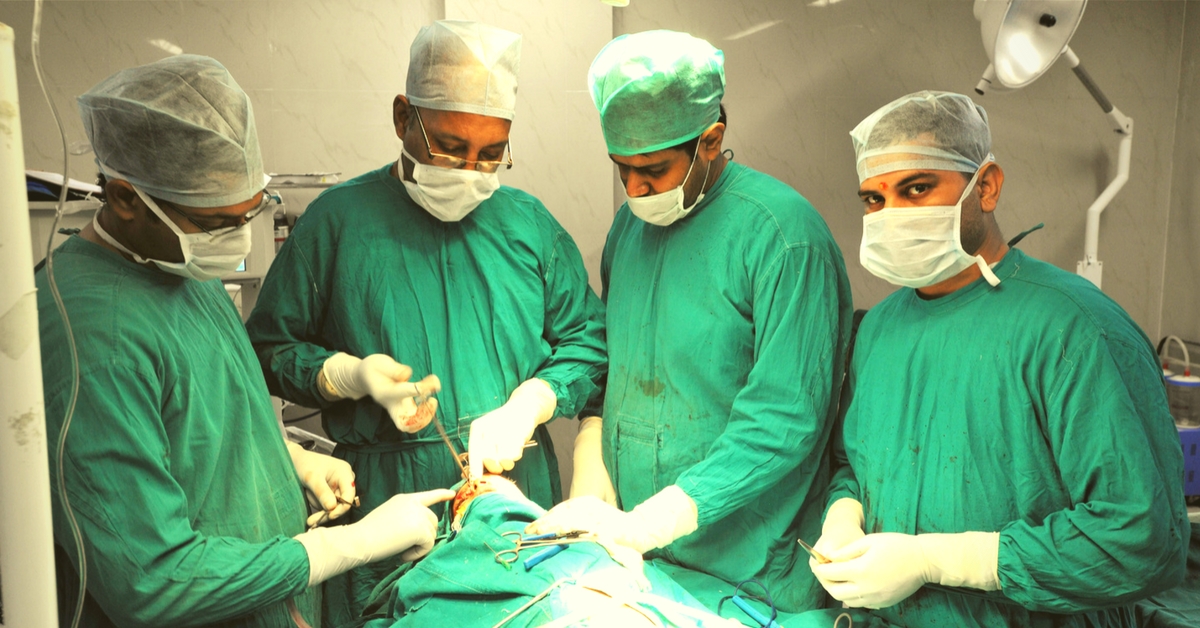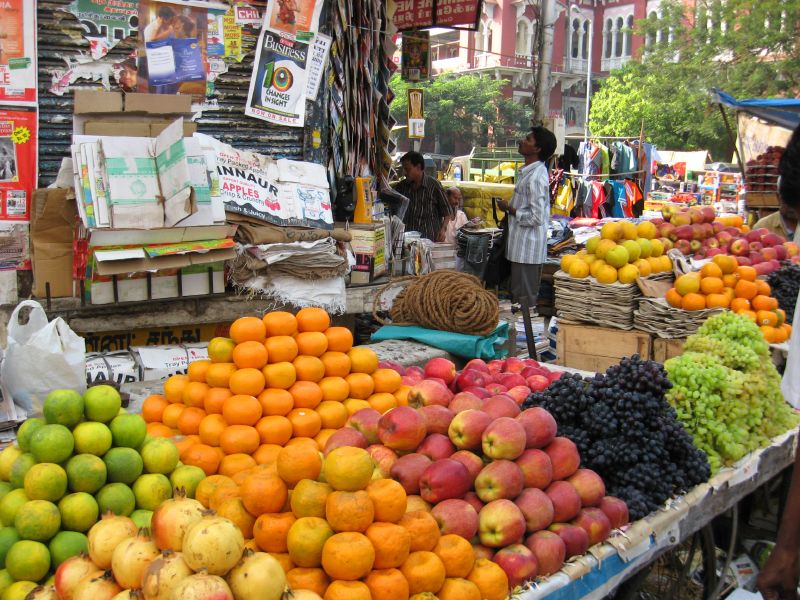I Don’t Smoke or Drink, I Eat Well & Exercise. How Did I Still Get Cancer? An Oncologist Answers.
Dr. Vishal Rao, an oncologist and head and neck surgeon at the Bangalore-based HealthCare Global (HCG) Cancer Center, writes about the debate on food safety in India and how it is related to cancer.

Dr. Vishal Rao, an oncologist and head and neck surgeon at the Bangalore-based HealthCare Global (HCG) Cancer Center, writes about the debate on food safety in India and how it is related to cancer.
A 45-year-old man presented himself to an oncologist with the typical symptoms of stomach cancer. His worst fears came true, the biopsy reports showed positive results.
He led an extremely healthy lifestyle; exercised regularly, maintained a balanced diet and did not have any addictions. Yet, cancer had managed to conquer his system. The distraught man asked the doctor, “Why me?” The visibly uncomfortable doctor was speechless.
Many oncologists go through a similar ordeal almost every day.

Picture for representation only. Source: Flickr
A lot of their patients may have maintained a healthy lifestyle and yet, end up succumbing to cancer. It may not be just tobacco; we have tons of other carcinogens, which have unfortunately entered our diet chart.
Some of the reports on food exports from India show we rank among the top in agri-food rejects to USA & EU as per the UNIDO reports. The key reasons for rejects implicated in the reports were – mycotoxins, microbial contamination, veterinary drug residues, heavy metals, unauthorised food additives, product composition and pesticide residues.
Ever wondered if this was the quality for exports, what could be the standards of internal consumption for us Indians? The Maggi trial that India witnessed recently opened the much-needed debate on food safety, exposing just the tip of the iceberg.
Let’s reflect on a few aspects of such safety issues. Why do we stand where we stand today?
Current status of food quality
“Diet and nutrition are two different aspects of food.” Is the current state of food quality in India a matter of implausible conjecture or a reality yet to dawn in the Indian mindset? Pesticides, preservatives and wasted calories seem to be the trends of the new Indian recipes.
Pesticides:

Source: Flickr
Recently a patient of mine walked into my outpatient clinic for a follow up visit. He brought with him a basket of fresh fruits as a token of his gratitude. While he handed it to me, he exclaimed, “Doc, these are not the regular ones which I keep for sale, these are ones grow for my own consumption.”
Also read: A Blood Stem Cell Donor Registry Needs Your Help to Save the Lives of Cancer Patients
The larger question – is our farmer well educated about balancing the quantity of pesticides to be used for safe and optimal yield; or does he believe that more is better! (Dilution and mixing of pesticides in regulated quantity is key.)
A growing concern among consumers is the question – do we have too much pesticides in our food? Are these really harmful? Is there a way to prevent this?
I have heard that often export rejects from various countries look at India as a potential market — be it tyres, automobiles or food products. Thanks to poor consumer awareness and implicit trust of the consumer in the manufacturer to abide by ethical practices. This is further compounded by extremely poor vigilance and enforcement by government agencies.
The Endosulfan Tragedy in Kerala has killed over 4,000 people and many have been affected since the 1970’s. Endosulfan is an internationally banned insecticide that was earlier used in cashew plantations to increase the product yield.
The progeny of many of the survivors still suffer from conditions like macrocephaly, intellectual disabilities and cancer. Despite the ban made by UN, Endosulfan is still being used in India. Recent reports in media highlighted traces of endosulfan found in several vegetables. Personal interactions with farmers confirm their use of these banned pesticides owing to a quick, sustained and stable yield.
Yes, pesticide residues in food are a growing concern. It is, however, vital to consume healthy and nutritious food after washing them thoroughly. Avoiding fruits and vegetables in fear of residue pesticides would be more harmful that the consumption of minimal residues themselves in causing cancer. Organic foods from reported and accredited farms may be the way forward and needs encouragement from the agriculture department. Educational programmes for farmers from NGO’s and departments would pave the way in foundation of food safety in farms.
Insecticide act of India 1968 is awaiting amendments. The amended act awaits clearance in Rajya Sabha.
Preservatives:

Source: Flickr
Traditionally, preservatives were introduced into food products for keeping them safe and edible for long periods. Salt, sugar and vegetable oil are classical examples, which preserve food and provide the body with nutrition when consumed at required amounts (class 1 preservatives).
As technology and research has advanced, we have moved to synthetic preservatives which help store and protect food from spoilage for extremely long periods (class 2 preservatives). While they may protect the food, they’re definitely harming us. Studies suggest that synthetic food preservatives like Sodium benzoate and Sodium nitrite can cause hyper reactivity in children and have been linked to gastric cancer as well. These preservatives are commonly found in cold drinks, processed meat, canned food and most importantly, ready-to-make food products.
Adulterants:

Source: Flickr
Food colourants are another group of chemicals quintessentially placed in the “cancer causing family.” Natural food colourants like pure beet/ pomegranate juice, carrot juice, spinach powder, parsley juice, turmeric powder, blueberry juice and cocoa powder can be used at home and in industries. Their shelf life may be low but they add nutritive value to the food product as well.
Red 40, Blue 1 and Yellow 5 are common synthetic food colourants used in industries even though they have been proven to cause long-term health problems. Indeed the palak gravy you may be having may be onion based gravy with green colourant.
Also read: This Startup Aims to Train 1 Lakh First Responders for Medical Emergencies in Every Indian City
Adulterants range from chalk powder (common in milk), saw dust (found in chilli powder), non-permitted dyes (common in turmeric powder) to coal tar (found in tea powder). Vegetables like green chillies and green peas are coated with malachite green (highly carcinogenic and are used as dyes to study bacteria) to enhance the colour and fruits like apples are coated with wax give them a glossy finish.
Hygiene:

Source: Flickr
Street food is a delicacy for the Indian palate. Microorganisms are responsible for more deaths than cancer every year. Typhoid fever, botulism, amoebiasis, etc. are common food and waterborne infections. An unhygienic condition maintained by street vendors and eateries is a key factor behind the spread of these infections. Vehicular emission, carbon dioxide and air pollutants from the roads are also absorbed by these food items. The basic practice of washing one’s hands before touching any food ingredient is unspoken of. H. Pylori is a growing cause of gastric cancers. Can this be a cause of increasing contamination and adulteration?
Degreening Agents:
As our storage methods are not effective enough, fruits and vegetables cannot be stored for a long time. They are harvested when they are raw and treated with de-greening ripening agents like calcium carbide and ethylene. They make the fruits colourful and appealing to the customer. By consuming these fruits, the consumer has unknowingly reduced his/ her life expectancy.
Looking into the current scenario of food safety makes us wonder – how have we reached here and where are we heading?

Picture for representation only. Source: Flickr
Today’s times would be rightly called “instant, unlimited and more” era. Man is in search of instant – coffee, pizza, burger, food and even success instantly. Unlimited food seems to be the most attractive and sought after option to make a dining choice. The more the better is our current attitude. It would not be surprising to witness buy 1 and get 3 free at the current pace and times.
The implicit trust placed by the Indian consumer on manufacturer advertisement and tall claims is appreciable. However, the food industry is rapidly and exponentially growing. We hope to have food that is given instantly, lasts as long as possible and in sufficient quality that satiates the palate. The industry, in an attempt to satisfy the customer, would need to resort to best methods to prolong life, improve revenues and combat competition simultaneously. Would all of these steps be feasible without compromising food safety? Is it not time for the manufacturers to reinstate this trust in the consumer and lay ethical guidelines to protect the consumer?
Food standard and safety act of India is a comprehensive act. The paradox is the regulation and implementation of this act. These bodies have largely remained to provide and regulate license. We have hardly come across brands being suspended owing to poor quality compliance. Would it not be ideal to have monthly checks of 100 random food products, selected from random shops in random areas and scrutinised for food safety? Is it not time for us to amend and strongly enforce Insecticide act of India 1968 to protect our future generations and secure food safety standards?
“Into that heaven of freedom, my Father, let my country awake”
(Written by Dr. Vishal Rao)
You can contact Dr. Vishal Rao here.
Like this story? Or have something to share? Write to us: [email protected], or connect with us on Facebook and Twitter.
NEW: Click here to get positive news on WhatsApp!
If you found our stories insightful, informative, or even just enjoyable, we invite you to consider making a voluntary payment to support the work we do at The Better India. Your contribution helps us continue producing quality content that educates, inspires, and drives positive change.
Choose one of the payment options below for your contribution-
By paying for the stories you value, you directly contribute to sustaining our efforts focused on making a difference in the world. Together, let’s ensure that impactful stories continue to be told and shared, enriching lives and communities alike.
Thank you for your support. Here are some frequently asked questions you might find helpful to know why you are contributing?


This story made me
-
97
-
121
-
89
-
167











